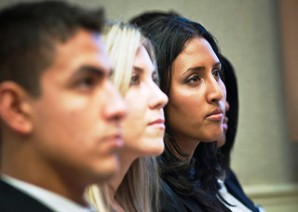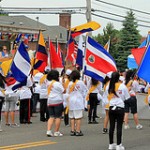Why Doubling Student Loan Interest Rates Would Hurt Latinos

USDAgov/flickr
Education officials in Florida say loans discourage students from choosing non-profit fields as careers.
Tuition is going up at Florida’s public universities this fall.
Now, barring Congressional intervention, student loan interest rates will double on July 1st from 3.4 to 6.8 percent.
The change affects subsidized Stafford student loans.
Student leaders and administrators from Palm Beach State College and Miami-Dade College North are joining Florida PIRG to call for a bipartisan bill to keep interest rates low.
“We are urging Senators Nelson and Rubio to act to extend the low interest rate on federal student loans on behalf of all students,” Christine Lindstrom said, Florida PIRG Higher Education Program Director.
The groups are focusing on Latinos, which Lindstrom said have been hit particularly hard by the economic downturn.
“Roughly 63,000 Latino students in Florida will see their loan amount increase by over $900 on average, which would total an additional $62-million in loan debt,” said Lindstrom.
Why the focus on Latinos? Lindstrom says there is a great interest in which way the Latino vote will go in the November election.
“Roughly 63,000 Latino students in Florida will see their loan amount increase by over $900 on average, which would total an additional $62-million in loan debt.”
– Christine Lindstrom,Florida PIRG Higher Education Program Director
“We wanted to make sure that the Latino perspective on issues in student aid was being put forth loudly and clearly,” she said.
Dr. Maria Vallejo is Provost of Palm Beach State College in Lake Worth, where 25 percent of the student population is Latino.
“The reality is that more Hispanic Americans in Florida need access to post secondary education,” said Vallejo. “And loans are not part of the culture. So increasing interest rates will scare them away.”
Higher rates are especially worrisome since student loans follow the borrowers for life. They cannot be discharged in bankruptcy.
In addition to Florida’s unemployment rate, which is higher than the national average, Vallejo said, “Loans discourage students from choosing education and nonprofit fields as careers [out of] fear that low salaries will not allow them to pay back the loans.”
Dr. Jose Vicente, President of Miami-Dade College North Campus, says his institution serves the working poor.
“Miami Dade College has the highest number of Pell Grant recipient students in the nation,” Vicente said. “46 percent of our students are below the poverty level by federal standards.”
FPIRG says a deal to keep interest rates low is being crafted by Senate Majority Leader Harry Reid, but several deals in recent weeks have fallen through.
Congress has less than a week to act.
